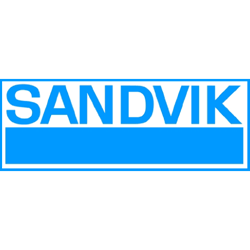Metal cutting experts Sandvik are looking to continue their 3D printing journey among uncertainty regarding the future of the tooling market. A growing market for electric cars is changing one of the largest revenues for Sandvik as traditional engines are considerably more demanding in terms of resources, with many more smaller parts that need to be tooled. This shift towards electric vehicles means the manufacturing process for future cars will not be as intensive or reliant on metal cutting tools. Sandvik are preparing themselves for such change.
The Swedish company, which prides themselves on their tooling expertise, are delving more and more into 3D printing to stay ahead of the game, and according to reports the company plan to purchase industrial software firms. This comes after last years announcement about the opening of a 3D printing R&D centre in Sandviken, Sweden.
Sandvik Machining Solutions (SMS) president Jonas Gustavsson said recently:
We are quite convinced that we should and need to start looking at a larger part of the production chain. So that is an evolution of our positioning.

Currently, Sandvik offer a number of metal powders for 3D printing, for a range of additive manufacturing processes. Such powders include the Osprey metal powder. More centrally to the business, they have 20% of the $17 billion metal cutting tools market. However, demand is dropping and to combat this:
We are going to want to take a position within additive [manufacturing] in one way or another. I also believe we will have found one or two areas that are strongly linked to what we do today. We are talking about additive as an interesting area that we are looking at, but there are other areas as well.
Sandvik operate heavily in the engineering sector as well as the automotive. Half of Sandvik’s sales are from engineering with a quarter coming from automotive. The exponential growth of battery driven cars, opposed to traditional fuel, means the manufacture process will be changing. However, Gustavsson explained a silver lining in the increasing demand for SMS’s more specialized tooling services:
This segment is not going to collapse and disappear. But we have to develop our offering so we are not as dependent on the standard inserts volume as we have been,
Nevertheless, the Swedish company are confident that whatever way the industry goes they will be prepared for it. Increasingly we are seeing additive as a complementary technology to traditional subtraction processes. If this becomes the case for Sandvik, the aim will be to utilize 3D printing in order to remain dynamic in their field and adapt to the ever-changing market.
Featured image shows Sandvik’s metal cutting process. Image via Sandvik Coromant.



